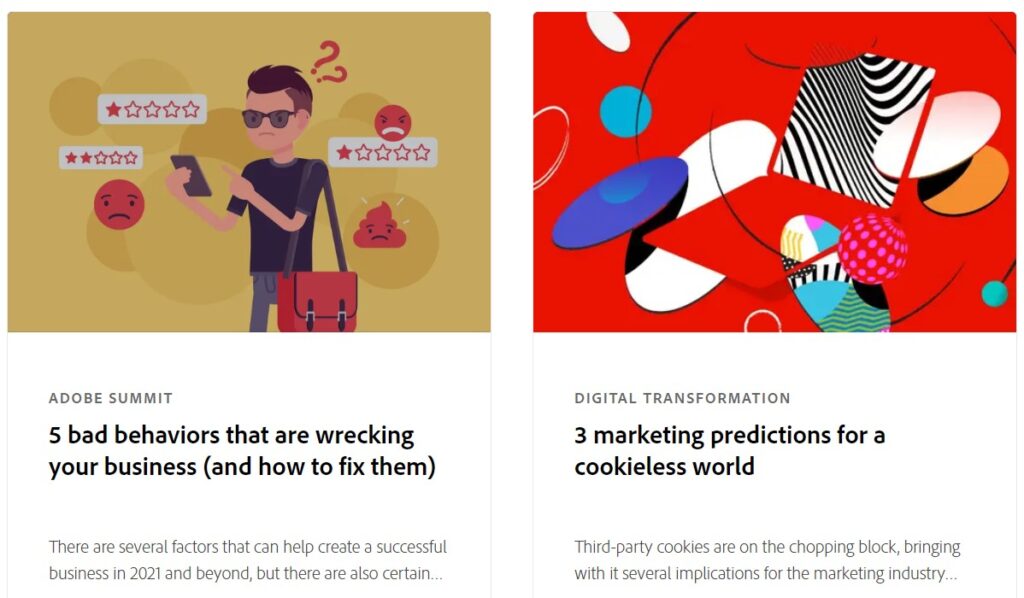As a content marketing professional with over five years of B2B marketing experience, believe me when I say that at least a few of these B2B inbound marketing examples are achievable for orgs of any size.
In the kingdom of inbound marketing, content is king, SEO is queen, and the royal prerogative is to craft high-quality, valuable content that pulls potential customers towards your business, engaging them in your brand narrative, and cultivating a relationship that lasts longer than a fleeting billboard ad. The emphasis is on addressing pain points and providing solutions rather than merely pushing for a purchase decision.
What is B2B Inbound Marketing?
Inbound marketing is the shining beacon in the dense fog of the business-to-business (B2B) arena. It's all about crafting high-quality, valuable content that pulls potential customers towards your business, engaging them in your brand narrative, and cultivating a relationship that lasts longer than a fleeting billboard ad. The emphasis is on addressing pain points and providing solutions rather than merely pushing for a purchase decision.
In the B2B context, inbound marketing takes a slightly different shade of nuance. Its strategies are designed to attract other businesses through thought leadership, data-driven content, SEO (search engine optimization), and problem-solving resources. It's a long-term play, nurturing relationships and trust over immediate sales, guiding B2B buyers through the complex buying journey.
Inbound Marketing vs. Outbound Marketing
Imagine inbound marketing as a magnetic force, drawing customers towards it. It involves blogs, eBooks, webinars, and SEO tactics that pull in customers actively seeking solutions. Inbound marketing strategy uses various formats like social media marketing, email marketing, and content marketing to reach the target audience, taking into account their preferences and behavior.
In contrast, outbound marketing is the bullhorn in the crowd, screaming for attention. It encompasses traditional advertising like TV commercials, cold calls, PPC (Pay-Per-Click), and other types of content that pushes a message out into the world, hoping it will stick. While it can be effective, its spray-and-pray approach can come off as disruptive and disengaged to today's ad-weary decisionmakers.
Inbound Marketing vs. Content Marketing
Inbound marketing and content marketing are often used interchangeably, but content marketing is actually just one tactic under the inbound marketing “umbrella.” Inbound marketing is a wider strategy that encompasses content marketing, SEO, social media, and other tactics to attract, engage, and delight customers. That’s not to say that content marketing isn’t an umbrella of its own. Content marketing refers to creating and distributing valuable, relevant content to attract a clearly defined audience through mediums like blogging, video, and podcasts, among others.
13 Examples of Inbound Marketing for B2B
To provide you with an in-depth understanding of B2B inbound marketing, let's delve into 13 pitch-perfect examples that demonstrate a wide range of successful marketing tactics. Want more? Check out our list of fantastic account-based marketing examples for even more campaign inspiration.
1. HubSpot's Comprehensive Blogs and Resources
There’s a reason that just about every marketing concept you Google is met with a HubSpot article at the top of the SERP. As the gold standard for B2B inbound marketing, HubSpot offers an extensive library of free, high-quality content. From social media to SEO, their blog posts, whitepapers, case studies, and webinars cover a wide array of digital marketing topics. HubSpot uses its own inbound marketing tech—an impressive suite of CRM and marketing automation tools, such as landing page templates and email marketing automation—to facilitate lead generation and streamline the sales funnel. By offering valuable content, they attract not only website traffic but also potential customers who are seeking a solution, making them a lead magnet in the industry.
2. Mailchimp's User-Friendly Guides
Mailchimp is another B2B company that excels in its inbound marketing strategy. Known for its email marketing software, Mailchimp provides user-friendly guides, checklists, and templates to help its users juice more value from their email marketing efforts. This valuable content helps businesses develop their email list and foster new leads. Furthermore, Mailchimp's content creation focuses on user-friendly, easy-to-implement strategies, helping users avoid common pain points and make the most of their email campaigns.
3. Slack’s Efficient Product Tutorial Videos
If you’re not already familiar with Slack (or, like me, practically glued to it), it’s a popular SaaS platform that is used as a textbook example of a “unicorn” startup. However, Slack owes a great deal of their growth to the video content in its inbound marketing campaigns. They create tutorial videos that guide users through the features and benefits of their platform. These videos not only educate potential customers about the product but also showcase real-time usage and benefits, aiding the decision-making process for B2B buyers.
4. Neil Patel’s Free SEO Tools
SEO guru and thought leader Neil Patel exemplifies the power of offering free tools and education. His comprehensive SEO toolset, paired with detailed blogs and podcasts, positions Patel as an industry influencer. Not only does this method draw traffic to his website—generating a plethora of qualified leads in the process—but it also makes him a living case study of the power of search engine optimization.
5. Salesforce's State of Marketing Reports
Salesforce, considered THE most renowned CRM tools, uses its wealth of user data to generate detailed annual 'State of Marketing' reports. These highly-anticipared, in-depth reports provide valuable insights into marketing trends and tactics, helping decision-makers shape their own strategies. This is a smart move that helps boost Salesforce's brand awareness and position as a thought leader in the B2B space by leveraging the datasets they already have.

6. Adobe's Thought Leadership Content
Adobe's CMO.com (not to be confused with our publication) serves as a platform for digital marketing and industry trends. By featuring insights from top industry leaders and influencers, Adobe reinforces its brand reputation and engages its target audience with relevant content. This positions Adobe as a reliable, high-quality resource for decision-makers in the marketing industry.
7. LinkedIn's Webinar Series
LinkedIn’s B2B inbound marketing strategy leverages the power of webinars to educate businesses about their platform. The webinars, often featuring industry leaders, provide actionable strategies to use LinkedIn effectively for B2B marketing, thus building engagement and loyalty. LinkedIn further uses this as an opportunity to gather contact information from participants, strengthening its lead generation strategy. Side note: you don’t have to be a giant org like LinkedIn to succeed with this tactic—it’s one of the most affordable, valuable, and scalable inbound marketing tricks of the trade!
8. Zoom's Informative Blogs and How-To Guides
Zoom, a leading video conferencing platform, offers insightful blog posts and how-to guides to help businesses make the most of their platform. From optimizing video quality to managing remote teams, their content addresses various pain points, attracting B2B buyers from different industries. This high-quality content enhances their brand's credibility and provides ample opportunities for lead generation.

9. Moz’s SEO Learning Center
Moz, a recognized name in SEO tools and resources, offers an SEO Learning Center packed with comprehensive guides and tutorials. It educates businesses about search engine optimization, helping them rank higher and draw more website traffic. By offering this valuable, free information, Moz positions itself as a knowledgeable and trustworthy leader in the SEO domain.
10. Microsoft’s In-Depth Whitepapers
Microsoft’s whitepapers are in-depth explorations of complex tech topics. Covering topics from cloud computing to AI, these whitepapers are a treasure trove of information for tech-savvy businesses. By providing such high-quality, gated content, Microsoft effectively gathers contact information from prospective customers, fueling their lead generation efforts.
11. Hootsuite’s Social Media Webinars
Hootsuite, a social media management platform, hosts regular webinars covering a range of social media marketing topics. By inviting industry influencers to their webinars, Hootsuite boosts their brand's authority while offering valuable insights to their target audience. This combination of knowledge sharing and influencer marketing is a potent recipe for generating new customers.
12. Dropbox’s Customer Testimonials
Dropbox’s B2B inbound marketing strategy includes showcasing customer testimonials. These testimonials act as social proof, showcasing how different businesses leverage Dropbox to solve their problems. This type of content resonates strongly with potential customers as they can see real-world applications and benefits of the product, often propelling them towards the purchase decision.
13. Atlassian's Interactive Product Tours
Atlassian, the team behind popular project management tools like Jira and Trello, provides interactive product tours to guide potential customers through their suite of products. These tours not only explain the features but also demonstrate how to address common project management challenges, catering directly to their buyer personas' pain points. The engaging, interactive nature of these tours increases the conversion rate, turning website visitors into new leads. By combining valuable content with an experiential user journey, Atlassian exemplifies a successful, customer-centric B2B inbound marketing strategy.
Components of An Effective Inbound Marketing Campaign
A compelling inbound marketing campaign is akin to an orchestra, each instrument playing its part to create a beautiful symphony. Here are the components:
- A Clear Goal: Define SMART inbound marketing objectives and what you want your campaign to achieve.
- Buyer Personas: Understand your target audience and tailor your content to their needs.
- High-Quality Content: Create valuable, SEO-friendly content that attracts and engages your audience.
- SEO Strategy: Implement SEO tactics to make your content visible to search engines.
- Conversion Path: A series of steps a visitor needs to take to become a lead, such as CTAs, landing pages, and thank-you pages.
- Promotion: Utilize social media, emails, and other channels to promote your content.
- Analysis and Optimization: Use analytics to measure your campaign’s performance and optimize it for better results.
How to Create An Inbound Marketing Campaign: A Checklist
Follow this quick-and-dirty checklist to orchestrate your next inbound marketing campaign:
- Define Your Goal and Metrics: Set a clear, measurable goal for your campaign.
- Identify Your Target Audience: Develop buyer personas to understand your audience.
- Create Compelling Content: Build content that offers solutions to your audience's problems.
- Optimize for SEO: Use keywords, meta tags, and other SEO techniques to improve visibility.
- Promote Your Content: Leverage different channels to reach your audience.
- Measure and Optimize: Use analytics to assess the success of your campaign and adjust as necessary.
A Great Inbound Strategy is Bound to Pay Dividends
Inbound strategies have some of the best ratios of effort-to-ROI, as they are inherently scalable, frequently passive, and highly effective at nurturing meaningful connections with your target audience. Better yet, many of these tactics (such as SEO or ABM tactics) gain additional value over time, helping you build a foundation of credibility that elevates your future inbound efforts.
Through effective inbound marketing campaigns like HubSpot's resourceful blogs or Mailchimp's user-friendly guides, you can organically attract and engage high-quality leads. So roll up your sleeves, embrace the inbound philosophy, and let your marketing magnet work its magic.
Want more tips and insights like this? Make sure to subscribe to The CMO newsletter to get it all straight to your inbox!


